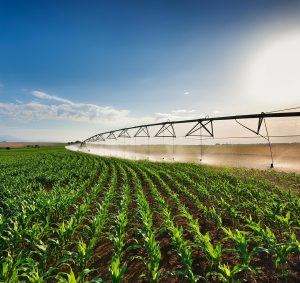

AS Zimbabwe continues to grapple with the effects of recurrent droughts exacerbated by climate change, the government has intensified efforts to boost irrigation development.
According to the mid-term review, treasury expended ZiG19,6 million towards irrigation development during the first six months of the year, with a target to achieve 6 864 hectares by December 2024.
The move is in line with the government’s commitment to climate-proof agriculture and ensure food security at both household and national levels.
The strategy aims to establish a robust agricultural system capable of producing crops year-round, regardless of the erratic rainfall patterns often associated with the region.
“Climate proofing agriculture and ensuring food security at household and national level is a commitment by the government that ensures all-year round cropping irrespective of the rainfall patterns of the season, leveraging on the transformational support programmes from the State and the private sector,” the Ministry of Finance said.
Through the National Accelerated Irrigation Rehabilitation and Development Programme, the Ministry of Finance says the government seeks to ensure that the country’s irrigation potential is fully exploited.
Through the rehabilitation and development of irrigation infrastructure the government is targeting to increase to 496 000 hectares of irrigable land by 2025.
“Going forward, government will seize on the opportunities offered by the Irrigation Development Alliance, a risk sharing framework among the State, farmers, private sector and banks, to crowd in additional funding to develop a viable and sustainable irrigation ecosystem that builds resilience and increases agricultural production and productivity,” the Ministry of Finance said.

Through the rehabilitation and development of irrigation infrastructure the government is targeting to increase to 496 000 hectares of irrigable land by 2025.
Government recently commissioned major dams such as Tokwe Mukorsi, Machekeranwa, Marovanyati, and Chivhu, which will provide essential water resources for irrigation.
Other significant dams, including Gwayi Shangaani, Kunzvi, Ziminya, Tuli Manyange, Vungu, and Semwa, are under construction and are expected to further expand irrigation capacity once completed.
Zimbabwe has faced a series of devastating droughts in recent years, a trend exacerbated by climate change.
The prolonged dry spells have had devastating consequences for the country’s agriculture-dependent economy, leading to food shortages, malnutrition, and economic hardship.
This year, the southern African nation has been severely affected by the recent El Niño event, a climate phenomenon characterised by warming sea surface temperatures in the Pacific Ocean.
The El Niño led to long dry spells and high temperatures across the country during the mid-season, leading to severe moisture stress, wilting of crops and significant crop failure in most areas.
According to the mid-term review, at least 7,7 million people, of which six million are in rural areas and 1,7 million in urban areas are projected to be food insecure during 2024 and hence, require food assistance.
Zimbabwe is not facing this challenge alone. The entire southern African region has experienced a series of droughts, impacting millions of people.
Malawi, Namibia, Zambia and Zimbabwe have all declared a state of national disaster following an El Niño-induced drought.
The Southern Africa Development Community has appealed for US$5,5 billion to assist more than 56,6 million people with urgent aid.